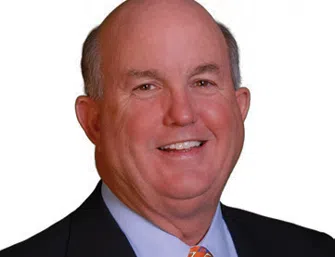An outbound customer service program can inexpensively increase sales and improve responsiveness.
Contacting your customers on a regular basis will increase retail revenues—if done properly. Companies that can do this reap huge rewards because they consistently deploy two important marketing tactics: making a "happy call" after every service call or installation; and calling after a promotional piece mailing.
In both cases, you are telephoning your customers, people who are familiar with the company either because of a recent experience or due to a past service or installation. The purpose of telephoning customers is not to "sell" them anything. Instead, the company is: a) ensuring that the customers' recent experience was a positive one, or b) informing the customer that there is a product or service available that can improve their indoor comfort, and/or save them money.
First, let's discuss the importance of a happy call. The happy call is an offensive tactic and goes a long way in keeping customers and gaining new ones. Think of it as a report card. The happy call gives the customer the opportunity to voice appreciation or concern. If a problem exists, the company can quickly make a correction. The information also can be used to recognize and reward co-workers. To make the most of a happy call, be sure to:
- Call within three days of the service and at a phone number and time of day that won't intrude on the customer's schedule. The service or installation technician can ask the customer for this information when the service or installation is complete.
- • Have a designated and fully trained customer service representative (CSR) responsible for happy calls. The appointed CSR should always review customers' history files before telephoning. This eliminates calls to customers who may have called in with a subsequent problem, and ensures the calls are handled professionally.
- Have a conversation guide available to make sure the right questions are asked. These need to be short and direct and should include inquiries about response time, the technician's ability to answer questions and concerns, cleanliness of the service area after work was performed, and most importantly, what the company can do to improve.
- Make sure that if the customer isn't happy, the CSR has an avenue to resolve the complaint. An important aspect of happy calls is to make unhappy customers happy, and quickly. Nothing is worse than a customer complaint left unattended, especially because the information was solicited.
Happy calls should be done on every customer as an on-going process. They ensure customers are satisfied, which translates into increased sales. Happy customers refer new business, at zero acquisition cost. And…if you don't ask customers how you are doing, how will you know? You won't!
The second element of a successful outbound customer service program is to share with customers the products and services the company has available that will save money and improve comfort. Customer-focused organizations consider this their responsibility as most customers are not aware of all the products and services available in today's market.
A cost-effective and highly successful tool in getting customers involved in comfort and money-saving products and services is to telephone after a promotional mailing. Remember, these are your customers. They know your company. Literally, hundreds of direct mail pieces land in a customer's mailbox every year, so differentiating your company can be challenging. Even the most appealing direct mail piece gets thrown away if benefits are not perceived immediately. Telephone follow-up provides another chance to explain the offer. Expect 50% to 60% more customer appointments when calling after a direct mail piece. This means that more than half of all service opportunities might not occur with direct mail alone.
The following seven steps will ensure success:
Step #1: Hiring
Soliciting business via the telephone is not for everyone. A good outbound CSR requires three characteristics: 1) a strong desire to win 2) the ability to recover from being told "no", and 3) empathy. They should be motivated by money but also appreciate that the offer isn't for everyone. Your outbound CSR should be able to stay focused and be enthusiastic about the offer and its benefits.
Step #2: Training
The initial training should be done in two sessions, with each session running two to three hours. The first session should take place about a week before telephoning begins. In this session, discuss benefits and the sales process. The second session should occur two to three days later. After a review of the first session, it's time to practice. Here's what to include in the training sessions:
- The promotional piece, reviewed carefully. Make sure all points are covered and all questions answered.
- A conversation guide to promote the offer. Have the CSR read it carefully, and have many practice run-throughs. The CSR should feel comfortable with the presentation. This is a guide, not a script, so allow the CSR some flexibility. He or she shouldn't sound rehearsed.
- An objection sheet that covers each possible "no" the outbound CSR might encounter. Prepare for the most common objections. They include: "I can't afford it." "The company down the street is offering the same service for less." "My equipment is too new." "I can't take time off of work."
- Tape the sessions, so the CSRs can hear their own, and others', presentation.
To be successful in the sales process, they must:
- Establish rapport. This is a challenge over the telephone. Listening for distracting background noise is important. If there is a distraction, the CSR should ask when they might phone back. If distraction is not a factor, the CSR should identify himself or herself and the company, and quickly explain the purpose of the call. The initial question should be open-ended, such as, "Did you get a chance to review the material we recently mailed?"
- Develop interest. The CSR should be enthusiastic, or the customer won't be. Now is the time for a benefit statement. Saving time or money, or both, is always of interest.
- Define needs. Listening is the key here. Needs are specific, and must be met to get the appointment.
- Close the sale. The CSR should restate the offer and have the customer acknowledge agreement. At this point, an appointment time is established, and customer information is verified.
A few other points, which appear obvious, are worth mentioning:
- CSRs should never chew gum or food while on the telephone. They must be present and focused.
- The customer is always right.
- CSRs should not disturb each other with idle chitchat.
- The CSR should not engage in idle conversation with the prospect. Many people are lonely, and just want someone to talk to.
- A supervisor should always be on hand to address disgruntled customers' concerns, and have the authority to resolve issues.
Step #3: Evaluating Performance
Performance standards should be in writing and discussed during the training sessions. The standards will vary market-to-market and by product or service, but here is a general guideline:
- Dials Per Hour: On average, 30 to 35 dials in a 50-minute period. A dial is a number dialed, regardless if the number is busy, disconnected, or a contact is made. The more dials made, the more money made!
- Contacts Per Hour: Eight to 12 contacts (from the 30 to 35 dials) is the general rule. If this is not happening, you may want to examine the quality of your list.
- Sales Per Hour: One appointment per 10 contacts can be expected.
Remember, there is a learning curve for outbound CSRs. After the first week, results should improve. Adjustments might need to be made along the way, and additional training may be necessary to get the desired results.
How many hours should outbound CSRs work per day? From experience, a maximum telephone time each day should be about four hours, with 50 minutes of actual calling time per hour. After four hours, CSRs tend to lose enthusiasm and start burning out.
Step #4: Appointment Procedures
A schedule should be updated daily. Remember, some customers will call in from the direct mail piece alone, so the schedule can change minute-to-minute. I recommend giving each CSR a schedule specific to a technician or salesperson. Then, this information is transferred to a master schedule for the dispatcher or sales lead coordinator.
The telephone list should be staged according to zip code, subsequently, so will appointments. This proves more productive from a scheduling and routing standpoint.
Step #5: Keeping Everyone Motivated
While money is the prime motivating factor, be prepared and committed to providing a lot of recognition and praise. And, add lots of fun elements to keep the enthusiasm level high. Strategies include:
- Goal boards, which the CSRs help establish. Post the group's goals and results every day. If a weekly goal has been met or exceeded, celebrate with a pizza party, ice cream sundaes, or an extra cash bonus.
- Appointing a cheerleader. This person can help supervise and motivate the group. Be sure to tie a portion of his or her compensation to group goals.
Step #6: Compensation
Compensation should equal results. Consider an hourly rate, plus commission, or straight commission, whichever is greater. The rate of pay will depend on the product or service being offered. If the CSR isn't setting more than one appointment per hour, then they will never exceed the hourly plus commission rate and not get the desired business the company expects.
Implement a bonus based upon group results, which fosters collaboration. Some customers will cancel after the appointment is made; don't penalize the CSR for the cancellation unless a pattern develops.
Step #7: Tracking Results
A daily tracking form should include the CSR's name, hours worked, and all of the information presented in Step #3. In addition, the number of dials that were disconnects or wrong numbers, no answers, answering machines, and contacts should be tracked. When a contact is made, document how many were not interested, the number of callbacks, how many appointments were made, and future or other leads.
A weekly tracking form consolidates the daily information. This system provides the opportunity to evaluate the integrity of the list, market areas, and CSR performance. Use this vital piece of information to make necessary program changes.
An important note regarding outbound customer service: Always check with your local and state laws to be sure the company is in compliance with telemarketing regulations. In most states, you are permitted to telephone an existing customer base, but individual states vary in what is considered a customer.
Today, it is vitally important that companies subscribe to a marketing-driven culture that informs, recognizes, and rewards its customers and co-workers. An effective outbound customer service program is one of the most successful, and least costly, ways to do just that.


.webp)
